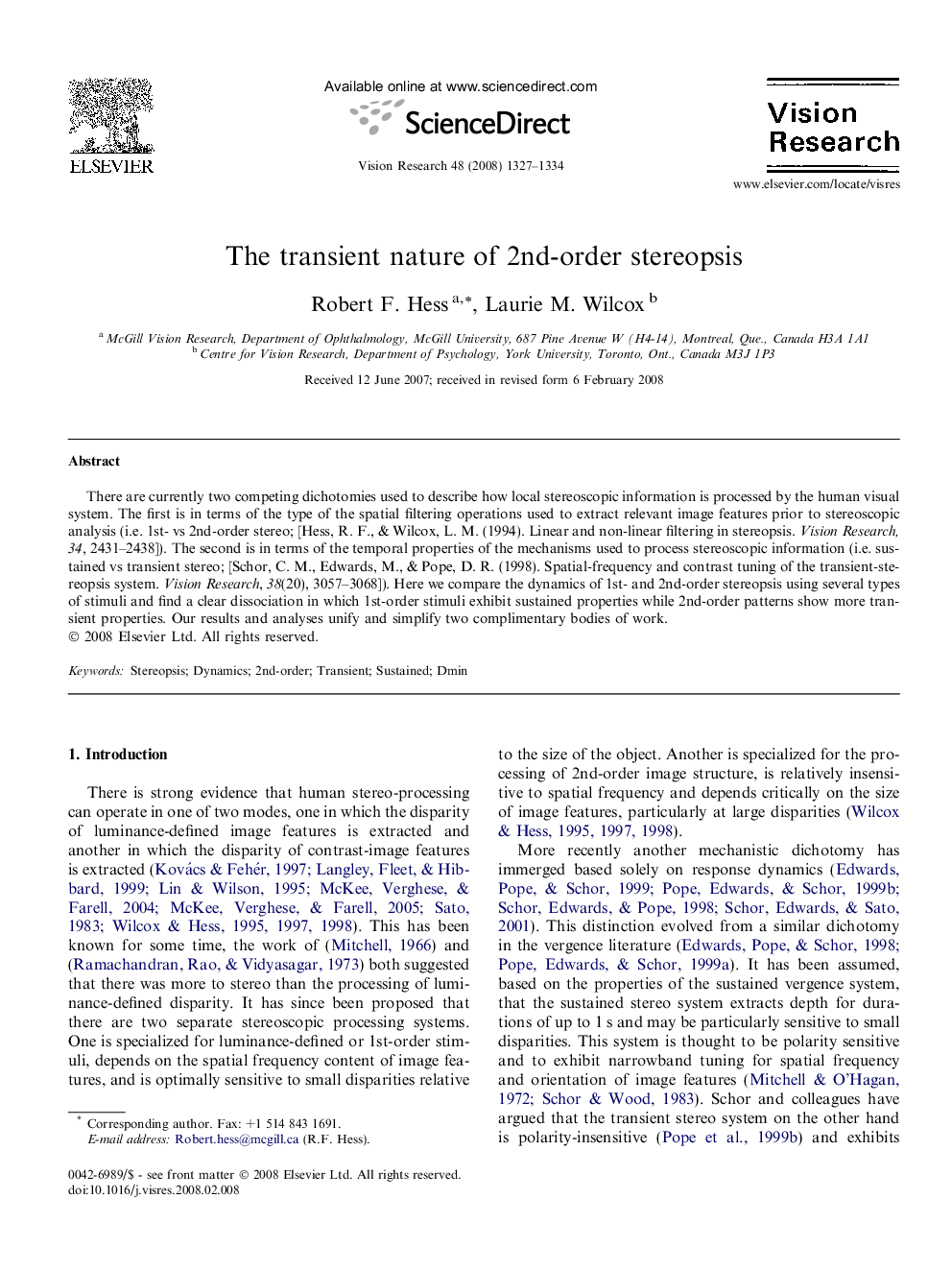| Article ID | Journal | Published Year | Pages | File Type |
|---|---|---|---|---|
| 4035724 | Vision Research | 2008 | 8 Pages |
There are currently two competing dichotomies used to describe how local stereoscopic information is processed by the human visual system. The first is in terms of the type of the spatial filtering operations used to extract relevant image features prior to stereoscopic analysis (i.e. 1st- vs 2nd-order stereo; [Hess, R. F., & Wilcox, L. M. (1994). Linear and non-linear filtering in stereopsis. Vision Research, 34, 2431–2438]). The second is in terms of the temporal properties of the mechanisms used to process stereoscopic information (i.e. sustained vs transient stereo; [Schor, C. M., Edwards, M., & Pope, D. R. (1998). Spatial-frequency and contrast tuning of the transient-stereopsis system. Vision Research, 38(20), 3057–3068]). Here we compare the dynamics of 1st- and 2nd-order stereopsis using several types of stimuli and find a clear dissociation in which 1st-order stimuli exhibit sustained properties while 2nd-order patterns show more transient properties. Our results and analyses unify and simplify two complimentary bodies of work.
